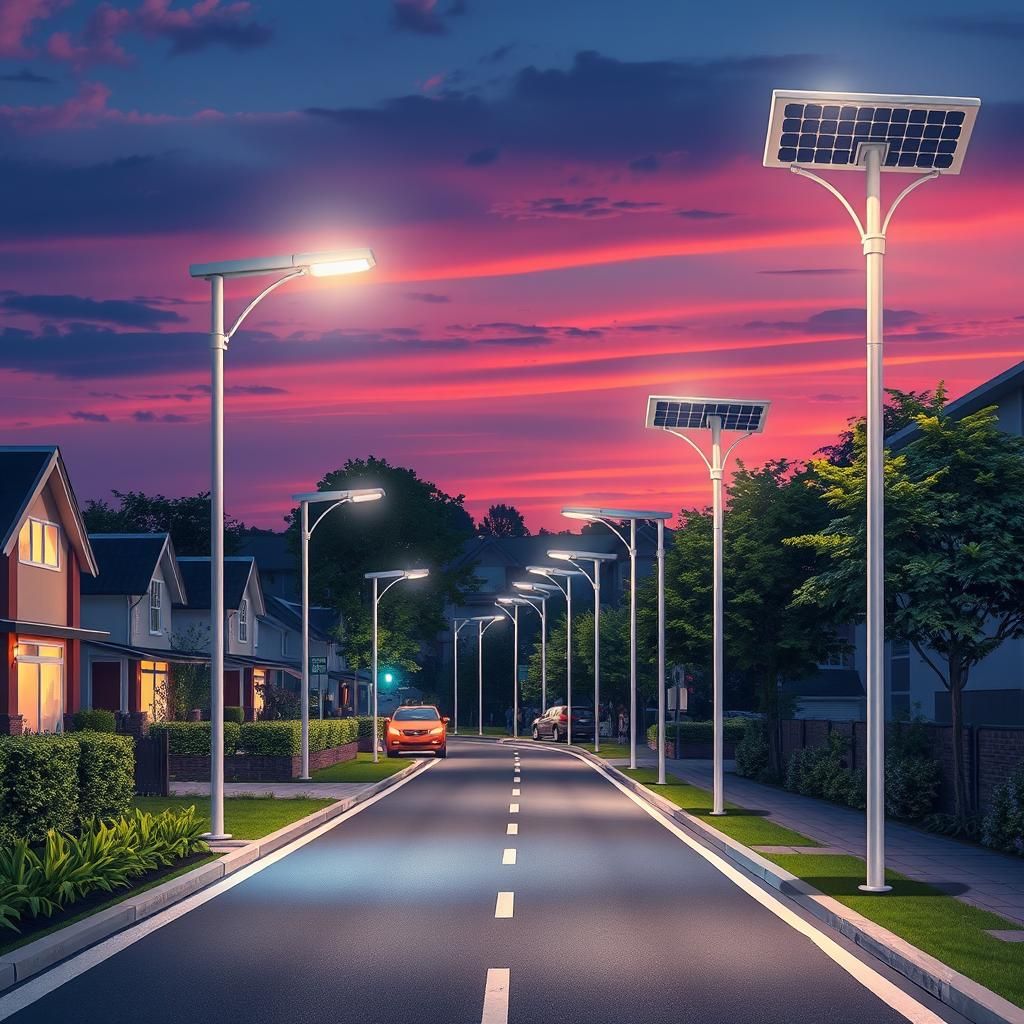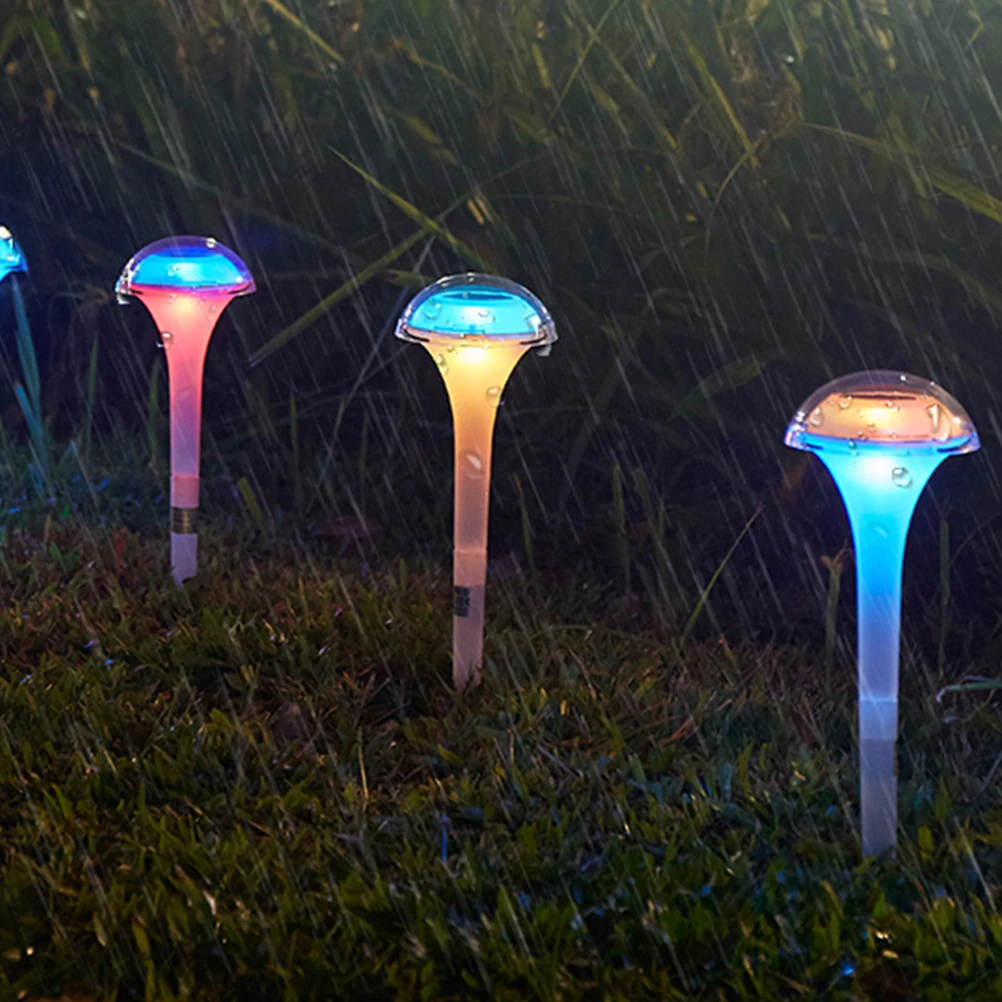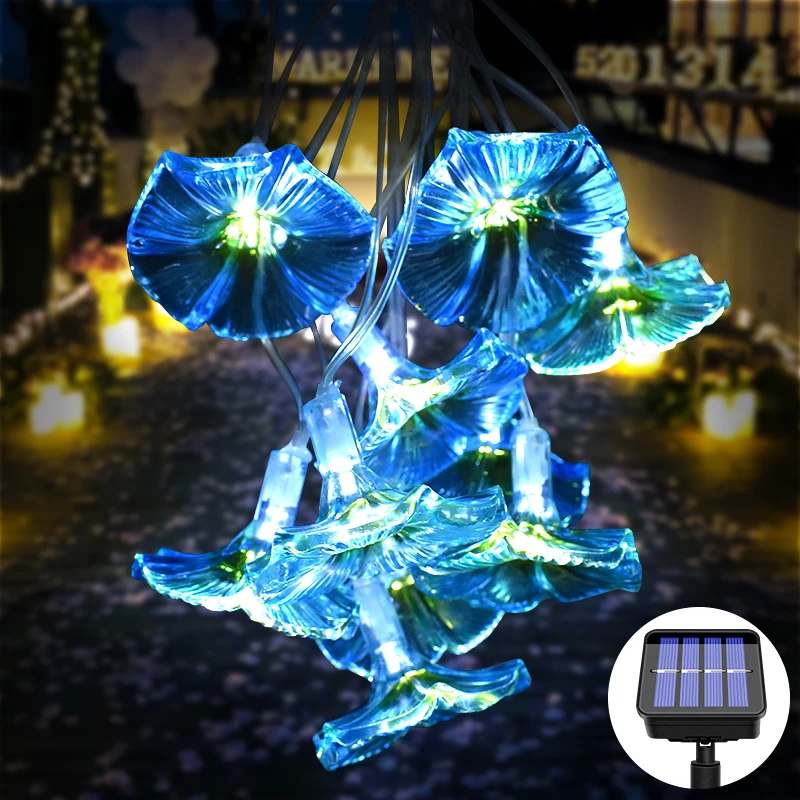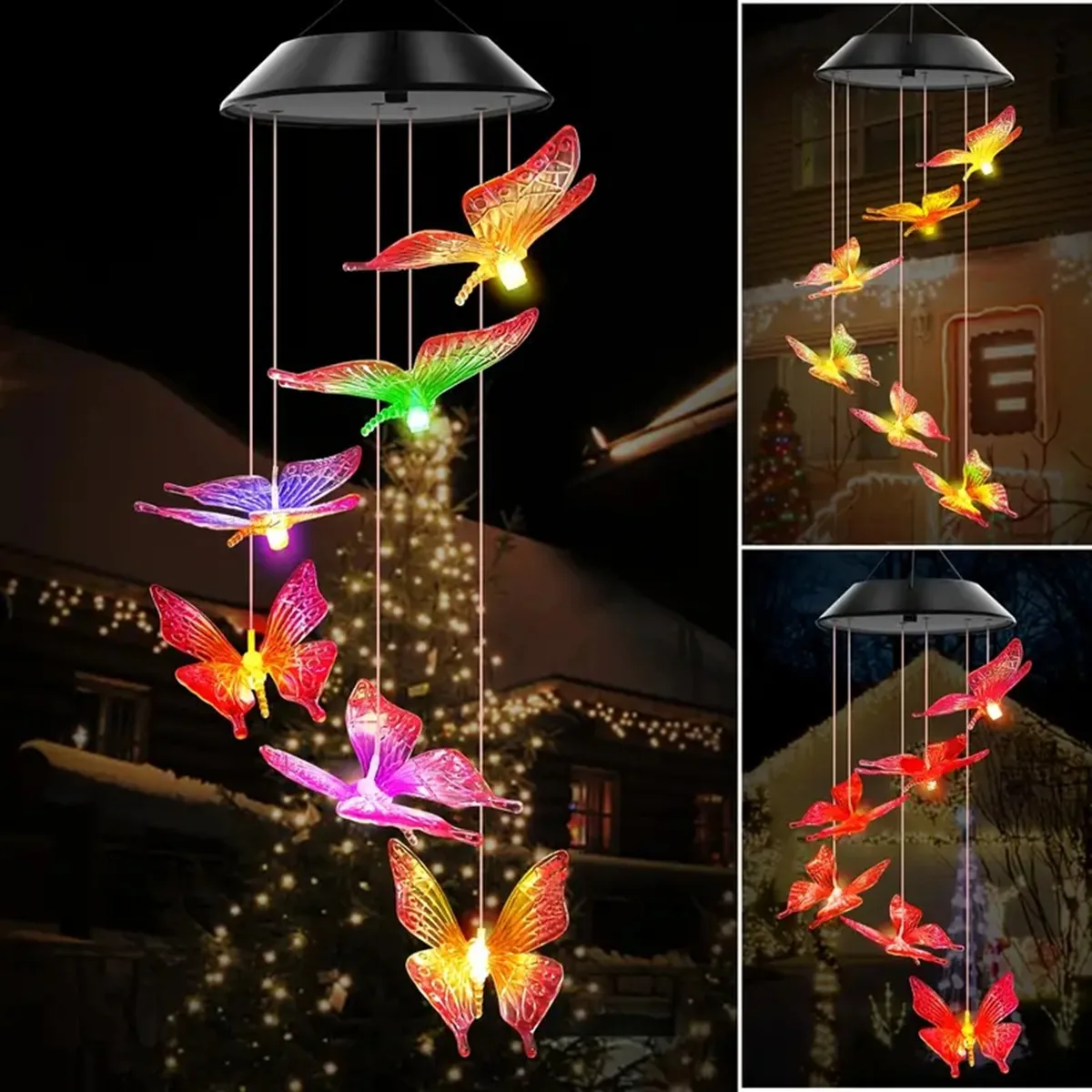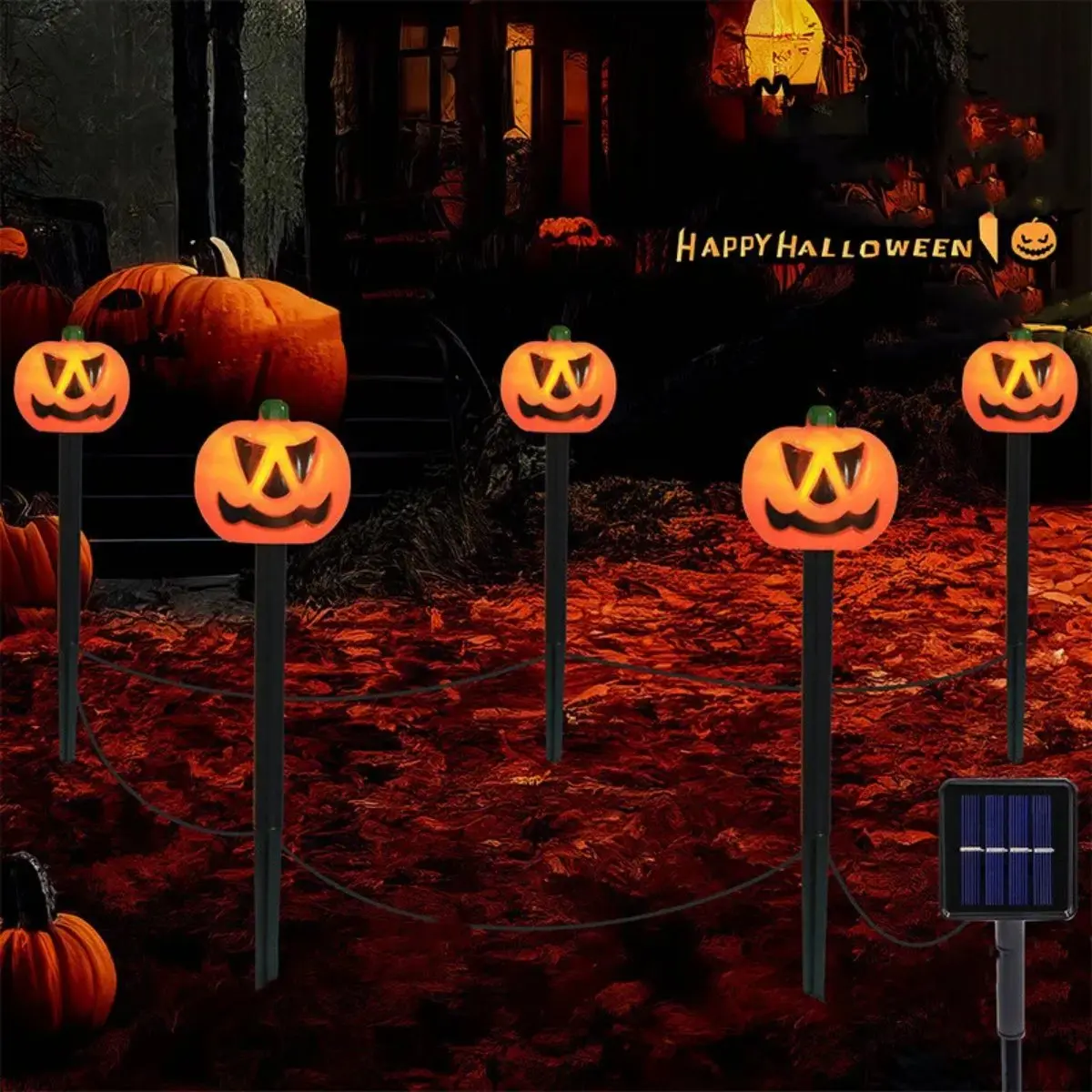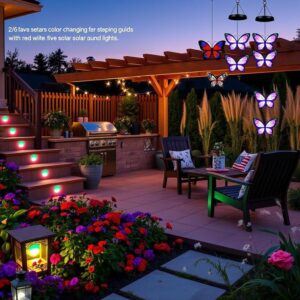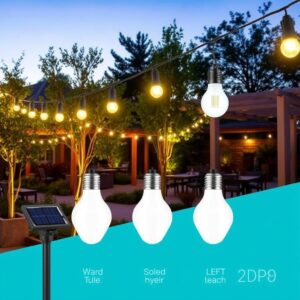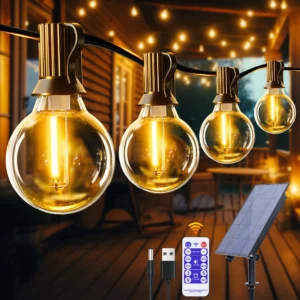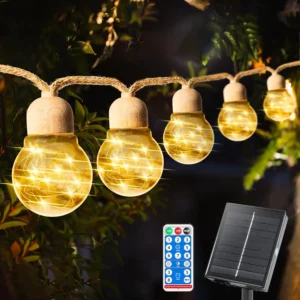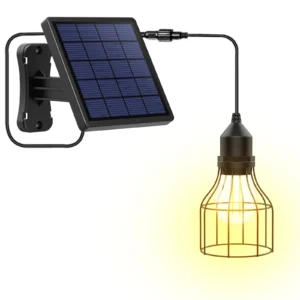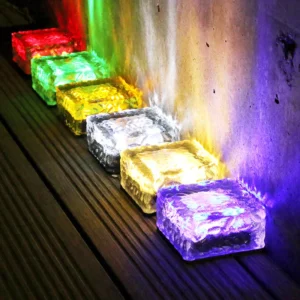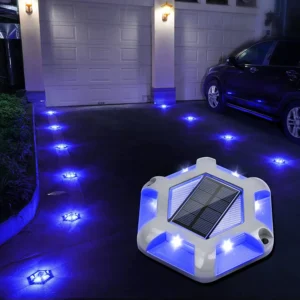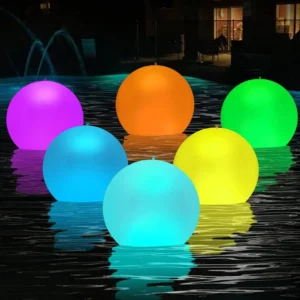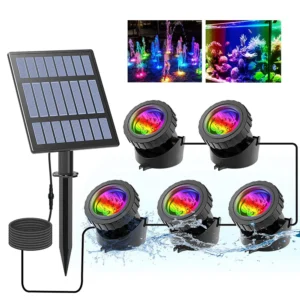2pcs Solar Mushroom Lights – Outdoor Garden & Patio Lighting
1. Introduction to Solar Street Lights in 2025
Imagine stepping outside at dusk and seeing streets bathed in soft, sun-powered light—no wires, no noisy generators, just quiet, reliable illumination. That’s the reality solar street lights are shaping today, and in 2025, they’re stepping into the spotlight like never before. Over the past decade, these smart, sustainable fixtures have evolved from simple solar panels paired with bulbs into sophisticated systems that power entire neighborhoods with clean energy.
The basic idea hasn’t changed: capture sunlight during the day, store it in batteries, and light the way once night falls. But what has changed is how cleverly and efficiently this process happens. Today’s solar street lights do more than just shine; they think, adjust, and communicate. They can dim when no one’s around, brighten on demand, and even alert maintenance teams when something’s off. This leap in intelligence isn’t just for tech’s sake — it’s about stretching every ray of sunlight to its fullest potential and cutting down on wasted energy.
These lights matter in cities and rural areas alike. Urban streets benefit from easier installation without digging up sidewalks for electric lines. Remote and off-grid communities gain safe, affordable lighting where none existed before. Across the globe, solar street lights are becoming silent guardians, boosting safety, cutting electricity bills, and carving a greener path forward.
So, what’s new in 2025? Expect modular designs that snap together for quick fixes, batteries that charge faster and last longer, and solar panels made to soak up light even from reflections and shadows. The future blends simplicity with smart tech, inviting communities to light their world on their own terms—all powered by the sun. Whether you’re strolling a city street or a countryside lane, this new generation of solar street lights promises a glow that’s smarter, cleaner, and ready for whatever the night brings.
Resin Elf Reading Solar Lights for Garden Patio Decoration
2. Key Innovations Driving Solar Street Lights in 2025
Solar street lights have come a long way, and 2025 is all about pushing innovation to the next level. Let’s cut through the noise and get straight to what’s making these lights smarter, tougher, and more efficient than ever.
Smarter Control Systems
Think of these lights as having brains. Intelligent sensors are now standard, enabling solar street lights to adapt to their surroundings with ease. They don’t just turn on at dusk and off at dawn anymore. Instead, they dim or brighten based on activity, weather, or time of night. For example, a street light might glow gently when no one’s around to save energy, then ramp up to full brightness the moment it detects movement—like a passing car or late-night jogger. This smart behavior minimizes wasted power, slashing operational costs and extending battery life. It’s like having your cake and eating it too, but in solar form.
Modular Designs
Forget about the headache of replacing an entire unit because a single part goes kaput. The modular approach breaks down street lights into easy-to-swap pieces: solar panels, batteries, LEDs, and control units. Need an upgrade? Swap out the panel for one that’s better, or replace a battery without hassle. This design keeps installations flexible and reduces downtime. Maintenance teams appreciate how quickly they can troubleshoot problems, slashing labor—and frustration. Imagine street lights as a LEGO set that grows and improves over time, fitting any urban or rural need.
Advanced Batteries
Battery tech is the backbone of all this magic, and 2025 brings serious improvements. Cutting-edge batteries now charge faster and hold power longer—no more fretting over cloudy days draining your lights. These batteries push far beyond their predecessors, enduring more charge cycles and staying reliable for years. Plus, they minimize heat generation, which improves safety and extends life. The result? Solar street lights ready to shine through unpredictable weather without missing a beat.
Bifacial Solar Panels
Here’s a clever trick: panels that soak up sunlight from both sides. Bifacial solar panels capture direct rays from above and reflected light bouncing off the ground below. This boosts overall energy harvest—even in places previously considered dim or shaded. Their flexible installation options fit rooftops, poles, or tilted angles, adapting to varied urban landscapes. By gathering more sunlight without extra space, they play a vital role in squeezing maximum power from the sun.
Automatic On/Off Sensors
No more wasted energy fiddling with switches. These sensors act like twilight whisperers, turning lights on when daylight fades and off at dawn. But they’re smarter, too: they can sense ambient brightness and pause lighting during unexpected daytime shadows or severe weather. This precise control stretches battery life while ensuring safety and visibility aren’t compromised. It’s a simple yet elegant way to keep the glow going just when you need it most.
In 2025, solar street lights aren’t just lighting streets—they’re weaving together smart design, modular ease, advanced storage, and clever sensing into a seamless, sustainable future. These innovations don’t just brighten the night; they lighten the load on our planet and our wallets.
Halloween Swaying Skull Solar Firefly Light 6/12LED
3. Busting Myths: Common Misconceptions About Solar Street Lights
Solar street lights have come a long way, yet some old misconceptions still linger—clouding the truth about what these bright, sun-powered marvels can really do. Let’s cut through the noise and shed light on some of the most common myths holding solar street lights back from the spotlight.
Myth 1: Solar lights need constant, direct sunlight to work effectively.
The idea that solar street lights demand endless, blazing sunshine is outdated. Modern solar panels use advanced technology to absorb diffuse light, meaning even on cloudy or overcast days, they quietly soak up enough energy to keep your streets glowing through the night. Cold weather? Not a problem. Cooler temperatures can actually improve panel efficiency, helping these lights perform better than you might expect. So, whether your sky is adorned with fluffy clouds or a light winter chill, solar lights stay on their game.
Myth 2: Solar street lights are less reliable than traditional street lighting.
Sure, traditional street lamps have been the norm for decades, but solar street lights now match—and often surpass—their reliability. Thanks to smarter batteries, energy-efficient LED bulbs, and intelligent control systems, these lights switch on faithfully at dusk and stay bright for hours, even in challenging conditions. Their lack of dependency on the electric grid means fewer outages or disruptions, making them a dependable choice for urban and remote neighborhoods alike.
Myth 3: High maintenance is required for solar street lights.
It’s tempting to think that solar technology means extra upkeep, but today’s solar street lights are designed for simplicity. Routine maintenance mostly involves occasional cleaning of panels to keep them dust-free—and a quick check of batteries after several years. Unlike traditional setups, there’s no complicated wiring or costly electricity bills dragging you down. This low-maintenance charm makes solar street lights a hassle-free upgrade for communities wanting sustainable illumination without the fuss.
Understanding these realities is key. When myths hang heavy, adoption stalls—but with clear facts lighting the way, solar street lights can finally shine where they belong. Embracing the truth about their resilience, efficiency, and ease can spark a broader embrace of sustainable lighting solutions, transforming streets and neighborhoods with confidence. After all, the future of lighting is not just bright—it’s smart, steady, and sun-kissed.
Morning Glory Blue Solar Flower Light – 10 LED Garden Decor
4. Environmental Benefits of Solar Street Lights
Solar street lights are more than just fixtures lighting up our streets—they’re powerful agents of environmental change. By choosing solar-powered lighting, communities take a significant step toward reducing their carbon footprint. Unlike traditional streetlights that rely on electricity often generated from fossil fuels, solar street lights harness the sun’s clean energy, slashing carbon emissions and helping combat climate change with every night illuminated.
One of the biggest wins is the dramatic decline in dependency on grid electricity. Conventional street lighting can demand a hefty chunk of a city’s power consumption, driving up costs and putting pressure on aging electrical infrastructure. Solar street lights sidestep this entire system, tapping into an abundant, free resource—daylight—to store energy in batteries that glow through the night. This shift not only cuts energy bills but also lightens the load on power plants, paving the way for a more resilient and sustainable urban energy landscape.
Installation is another area where solar street lights shine environmentally. Traditional setups often require extensive trenching, cabling, and connection to the power grid, causing disturbances to sidewalks, roads, and green spaces. Solar street lights drop into place with minimal fuss—no wires to dig up, no centralized power needed, just a sturdy pole, sunlight, and smart design. This low-impact installation protects existing infrastructure and local ecosystems, making it a green choice from start to finish.
On a broader scale, solar street lights align beautifully with sustainable urban development goals. They help cities meet targets for energy efficiency and carbon neutrality without sacrificing safety and accessibility after dark. Imagine neighborhoods softened by soft pools of solar-lit warmth, streets safer and more welcoming, all while quietly honoring the planet’s limits. Solar street lights prove that eco-conscious innovation can pair hand in hand with practical urban needs—making tomorrow’s cities smarter, cleaner, and kinder to the environment.
Halloween 3D Pumpkin Ghost Solar Stake Light for Pathway Decor
5. Community Impact and Urban Challenges
Solar street lights are doing more than just lighting pathways—they’re quietly reshaping communities. Reliable, well-placed lighting improves public safety, turning dark corners into welcoming spaces where people feel secure every night. Think about neighborhoods that were once shadowed and uncertain, now buzzing with life after dusk because solar street lights installed at key spots cast steady, comforting glows. In remote areas, where grid electricity is scarce or nonexistent, these solar beacons become lifelines, making streets accessible and safe without massive infrastructure investments.
Consider cases where communities have seen dramatic transformations. In towns facing frequent power outages, solar street lights have ensured uninterrupted illumination, reducing accidents and crime rates. Places that installed them along parks or pedestrian walkways noticed increased evening activities and a stronger sense of community connection—proof that lighting does more than just brighten; it brings people together.
But it’s not all smooth sailing. Urban environments pose real challenges for solar street lighting. Weather can be fickle; cloudy days and winter months with shorter sunlight hours stress battery storage needs. This means that systems must be equipped with advanced batteries capable of holding longer charges or rapidly replenishing when the sun does shine. Without thoughtful energy storage, the lights risk dimming too early or failing when the city needs them most.
Financial hurdles also come into play. Although solar street lights pay off over time through energy savings and reduced maintenance, the upfront investment can deter communities with tight budgets. Balancing initial costs with long-term benefits requires careful planning and often, creative financing solutions or subsidies. Additionally, urban areas face the risk of vandalism. Lights can be targets due to their visibility and accessibility, so security measures—like sturdy materials or protective casings—need to be incorporated to safeguard these eco-friendly assets.
Battery storage capacity remains a sticking point. While innovations have pushed limits, limited space in urban light poles and variable sunlight create constraints that designers and city planners must address. Effective solar street lighting in cities hinges on marrying smart technology with thoughtful urban design, ensuring resilience even in less-than-ideal conditions.
Solar street lights are powerful tools for community upliftment but must be integrated with awareness of the unique urban challenges they face. When done right, these lights don’t just illuminate roads—they kindle safer, more connected neighborhoods powered by the sun.
Purple Butterfly Solar Wind Chimes – Color Changing Outdoor Decor
6. Practical DIY Installation Tips for Solar Street Lights
Ready to light up your street or backyard with solar street lights? Going the DIY route isn’t just a money-saver—it’s a straightforward way to bring sustainable, reliable lighting to your space without the fuss of complicated wiring. Here’s a down-to-earth guide to get you started, no frills, just the essentials.
Choosing the Optimal Location
First thing’s first: solar panels need sunlight. Find a spot where your panels can bask in direct sunlight during peak hours, typically between 10 a.m. and 4 p.m. Avoid shady trees, buildings, or anything that blocks the light, even for part of the day. Facing the panel south (in the northern hemisphere) or north (in the southern hemisphere) usually gives the best exposure. This simple step maximizes how much juice your panels can store, making sure your lights don’t dip when evening falls.
Cleaning and Maintenance Routines
Solar panels love sunlight but not dirt and grime. Keep those panels clear by wiping them down regularly with a soft cloth and soapy water—no harsh chemicals needed. Dust, leaves, or bird droppings can act like a tiny curtain, cutting down on efficiency and dimming your garden’s glow. A quick clean every couple of weeks keeps the light shining bright and the batteries charged up. Also, check your fixtures for occasional wear and tear—tighten any loose bolts and make sure sensors aren’t blocked for smooth operation.
Step-By-Step Installation Overview
- Assemble the Kit: Most solar street lights come in parts—panel, light head, pole, and batteries. Lay everything out and check the instructions.
- Mount the Pole: Pick your spot, dig a hole deep enough for stability—usually about 18-24 inches—and cement the pole in place if possible for extra sturdiness against the wind.
- Attach the Solar Panel: Secure the panel at the top, angled to catch maximum sun, according to your region’s latitude.
- Connect Wiring: If your model requires it, connect the panel to the batteries and then to the light head—usually plug-and-play but double-check your manual.
- Test: Flip the switch or wait for sunset to see the magic happen. Adjust the angle if needed for better lighting or panel exposure.
Tools and Materials Needed
You’re looking at a minimal toolkit—basic screwdrivers, a wrench, a cordless drill, and a spade or post hole digger. Cement is optional but recommended for permanent installs. Having a ladder is handy for attaching the panel up high safely. Most solar street lights come with user-friendly manuals, so you’re guided through the process without needing an electrician.
By choosing the right spot, keeping your panels clean, and following a clear installation plan, you’ll have your solar street lights glowing warmly into the night in no time. It’s simple, it’s smart, and it’s a practical step toward lighting your world with the power of the sun.
Pumpkin Solar Stake Lights for Halloween Garden Decor
7. Conclusion and Future Outlook
As 2025 unfolds, solar street lights stand at the crossroads of technology and community progress, showcasing just how far this green innovation has come. The breakthroughs we’ve explored—smarter controls, modular designs, advanced batteries, bifacial panels, and automatic sensors—are not just flashy upgrades. They’re practical solutions that slash energy use, simplify maintenance, and extend the lifespan of these lights, making them a more reliable and cost-effective choice than ever before.
More than tech, solar street lighting is about impact. Communities, whether tucked away in rural corners or bustling urban centers, are feeling the difference. Streets once cloaked in shadows now brim with safe, eco-friendly illumination that doesn’t lean on strained power grids or skyrocket budgets. This isn’t just light on a pole; it’s a beacon for sustainability, safety, and smarter city planning.
Looking ahead, the future of solar street lights is bright—and promising. Research is pushing boundaries toward even better batteries, smarter integration with city infrastructures, and materials that blend seamlessly into our environments. Imagine streets that adjust their lighting with crowd flow or weather, or solar panels so efficient they work beautifully in less-than-perfect sunlit spots. These aren’t distant dreams but the next steps on the horizon.
For communities and individuals considering the shift, it’s clear: adopting solar street lights means embracing innovation that pays dividends in savings, safety, and sustainability. It’s about lighting the way forward with clean, quiet confidence.
So whether you’re weighing options for your neighborhood or just curious about greener ways to brighten your world, think solar. The technology is ready. The benefits are tangible. And the path to a more sustainable future is lit—quite literally—by the power of the sun.

